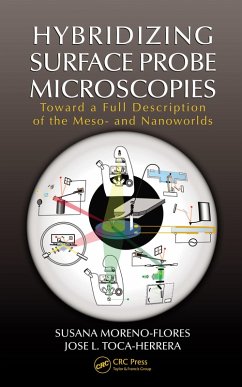Reviewing recent research efforts, this book explores how the combination of scanning probe microscopies with complementary techniques provides a complete description of nanoscale and mesoscale systems and processes. The text offers broad coverage of a variety of scanning probe microscopy techniques but with a specific focus on hybrid or combination methods. It also includes a CD with color figures from the book. The authors discuss how the combination of experimental techniques can enable researchers to understand and visualize phenomena at small scales.
Dieser Download kann aus rechtlichen Gründen nur mit Rechnungsadresse in A, B, BG, CY, CZ, D, DK, EW, E, FIN, F, GR, HR, H, IRL, I, LT, L, LR, M, NL, PL, P, R, S, SLO, SK ausgeliefert werden.

